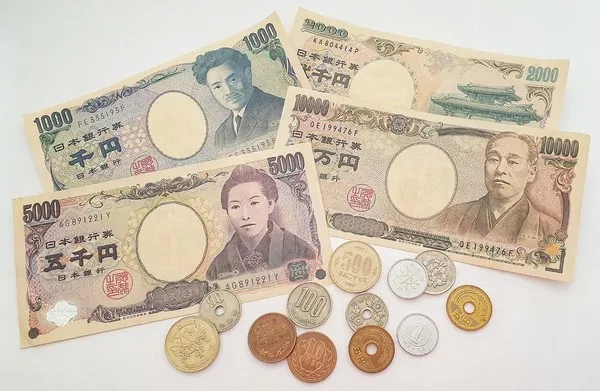Japan’s reputation as a global leader in technology and innovation extends to its financial sector, where diverse payment methods cater to the needs of both locals and international visitors. From traditional cash transactions to cutting-edge digital payment systems, Japan offers a wide array of options for conducting financial transactions. In this article, we will explore the various Japanese currency payment methods prevalent in the country, shedding light on their unique characteristics, usage trends, and the evolving landscape of payment innovations.
Japanese Currency Payment Methods in Japan
1. Cash Payments in Japan
Despite the rapid advancements in digital payment technologies, cash remains a prevalent and widely accepted form of payment in Japan. The cultural inclination towards physical currency and the high value placed on privacy and anonymity in financial transactions have contributed to the enduring popularity of cash payments. Notably, Japan has a well-established infrastructure of ATMs that dispense cash, making it convenient for both residents and visitors to access funds.
However, it is important to note that while cash is widely accepted at many establishments, there is a growing trend towards cashless transactions, particularly in urban centers and tourist hubs. The government’s push for cashless payments as a means to enhance convenience, transparency, and efficiency has led to increased acceptance of digital payment methods across various sectors of the economy.
2. Credit and Debit Cards
Credit and debit cards are widely used in Japan, especially in urban areas and larger retail establishments. International visitors are likely to find that major credit cards, such as Visa, MasterCard, and American Express, are accepted at many hotels, department stores, restaurants, and tourist attractions. However, it is advisable to carry some cash, as smaller businesses and local establishments may prefer cash payments.
In recent years, the growing popularity of contactless payment methods, such as IC cards and mobile wallets, has further diversified the options available to consumers. These technologies offer enhanced convenience and security, making them increasingly favored by both retailers and consumers. The widespread adoption of these digital payment solutions reflects Japan’s ongoing transition towards a more cashless society.
3. IC Cards and Mobile Payments
IC cards, or “smart cards,” are widely used for public transportation and as a form of electronic money. Popular IC cards include Suica, Pasmo, and Icoca, which can be used to pay for train and bus fares, as well as at vending machines, convenience stores, and participating retailers. This versatility has made IC cards an integral part of daily life for many Japanese residents, offering a seamless and efficient payment experience.
In addition to IC cards, mobile payment platforms have gained traction in Japan. Services like Apple Pay, Google Pay, and various domestic mobile wallet apps offer users the ability to store credit and debit card information securely on their smartphones, enabling contactless payments at a wide range of merchants. The convenience and security features of mobile payments have contributed to their growing popularity in Japan’s retail landscape.
4. QR Code Payments
QR code payments have seen a significant rise in adoption across Japan, propelled by the introduction of platforms such as PayPay, LINE Pay, and Rakuten Pay. These services allow users to make payments by scanning QR codes displayed at participating merchants, making the transaction process swift and straightforward. The appeal of QR code payments lies in their accessibility, as users can link their bank accounts or credit cards to these platforms, facilitating seamless transactions at various retail outlets.
Moreover, the integration of loyalty programs, discounts, and cashback incentives has further incentivized consumers to embrace QR code payment solutions, driving their widespread acceptance in the Japanese market. As a result, QR code payments have become an integral component of the evolving payment ecosystem in Japan, catering to the evolving preferences of tech-savvy consumers.
Evolving Regulatory Landscape
The Japanese government has actively supported the proliferation of digital payment methods, recognizing their potential to enhance economic efficiency, financial inclusion, and transparency. Regulatory initiatives aimed at promoting cashless transactions have included the implementation of cashback incentives, tax deductions for cashless purchases, and collaborative efforts with financial institutions and technology companies to develop innovative payment solutions.
Furthermore, regulatory framework enhancements have contributed to the establishment of a secure and reliable environment for digital payments. Stringent data protection standards, robust fraud prevention measures, and consumer protection regulations have instilled confidence in the use of digital payment platforms, promoting their adoption and fostering a thriving payment ecosystem.
See Also: Pros & Cons of Buying Yen in Japan
Conclusion
In conclusion, Japan’s currency payment methods encompass a diverse array of options that cater to the needs of its tech-savvy populace and visitors alike. As digital payment platforms continue to gain prominence, they are poised to redefine the dynamics of financial transactions, offering enhanced convenience, security, and efficiency. By embracing innovation and adapting to evolving consumer preferences, Japan’s payment landscape is poised to undergo further transformation, reflecting the nation’s commitment to advancing financial infrastructure and fostering economic growth.


